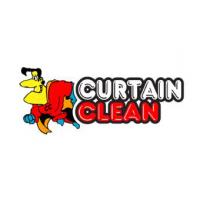Curtain Clean Hamilton
Curtain Clean specializes in cleaning all types of window treatments.
Looking for professional curtain cleaning for your curtains, drapes, and blinds? Curtain Clean is a leading name in delivering outstanding curtain cleaning services along with exceptional customer service over most of the North Island.
We have been in business for over twenty years and have successfully served both residential and commercial clients.
Drapes, curtains, or blinds are something that you often miss while cleaning your home. But just like your carpets, these act as a filter absorbing smoke, dust, dirt, odour, and contaminants. These play a role in keeping the quality of your air unspoiled. Home cleaning methods are unable to properly clean curtains, drapes, and blinds..
With the professional curtain and blind cleaning, we make your curtains and blinds hygienic, thereby saving you and your loved ones from health hazards.
Curtain Clean has agents in many areas.
your Local agent is;
Guthrie Bowron Hamilton Central
83 Tristram St, Hamilton Lake
Ph: 07-838 0811
https://www.curtainclean.co.nz/your-local-agent/
Or give us a call today on 0800 5790501.
Caring for your curtains..
Looking for professional curtain cleaning for your curtains, drapes, and blinds? Curtain Clean is a leading name in delivering outstanding curtain cleaning services along with exceptional customer service over most of the North Island.
We have been in business for over twenty years and have successfully served both residential and commercial clients.
Drapes, curtains, or blinds are something that you often miss while cleaning your home. But just like your carpets, these act as a filter absorbing smoke, dust, dirt, odour, and contaminants. These play a role in keeping the quality of your air unspoiled. Home cleaning methods are unable to properly clean curtains, drapes, and blinds..
With the professional curtain and blind cleaning, we make your curtains and blinds hygienic, thereby saving you and your loved ones from health hazards.
Curtain Clean has agents in many areas.
your Local agent is;
Guthrie Bowron Hamilton Central
83 Tristram St, Hamilton Lake
Ph: 07-838 0811
https://www.curtainclean.co.nz/your-local-agent/
Or give us a call today on 0800 5790501.
Caring for your curtains..
Curtains, Laundrettes

